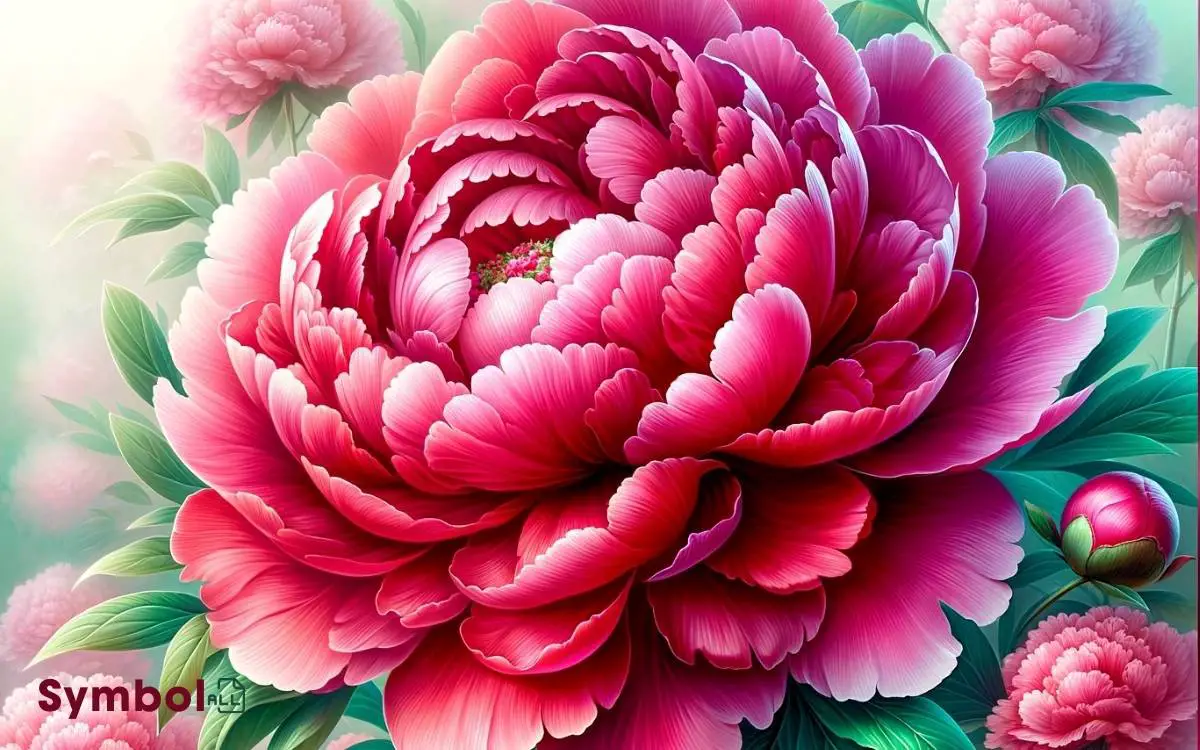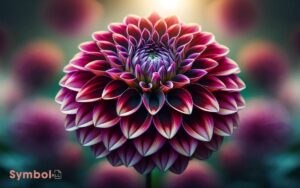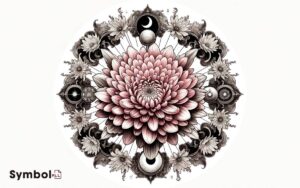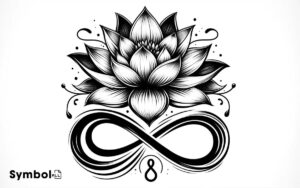What Does Peony Flower Symbolize? Prosperity!
Peony flowers symbolize prosperity, beauty, and romance. Originating from Asia, Europe, and Western North America, they’ve been revered for both medicinal and symbolic importance.
In Chinese culture, they’re seen as the ‘flower of riches and honor’, symbolizing wealth and prosperity. Red peonies, associated with deep love, express the dynamic growth and intensity of romance, while their enchanting beauty and intricate petals reflect pure aesthetic allure.
Historically linked to healing in Greek mythology, peonies also embody strength and durability. Their varied hues convey complex emotions, from purity and forgiveness to honor and respect.
Revealing their symbolism brings a deeper understanding of human experiences and cultural beliefs.

Key Takeaways
Historical Significance
Throughout history, peony flowers have been revered for their medicinal and symbolic significance, deeply embedded in various cultures around the world.
Originating from Asia, Europe, and Western North America, these flowers boast a rich tapestry of meanings, varying from one culture to another.
In ancient times, peonies were valued not just for their stunning beauty but also for their therapeutic properties.
They were used in traditional medicine to alleviate various ailments, such as menstrual cramps and headaches, showcasing their importance beyond the ornamental.
The peony’s resilience, thriving in harsh conditions, symbolized strength and durability, qualities admired by many cultures.
This historical significance underpins the peony’s continued reverence today, offering you a glimpse into the past where nature and culture intertwine seamlessly.
Wealth and Prosperity
Peony flowers have long symbolized wealth and prosperity, embodying the hopes and aspirations of those who cherish them.
These blooms aren’t just visually stunning; they’re packed with meaning, especially when it comes to signifying abundance and financial success.
| Culture | Significance |
|---|---|
| Chinese | In China, peonies are known as the ‘flower of riches and honor,’ believed to bring good fortune and high status. |
| Japanese | The peony, or ‘botan’, represents wealth, good fortune, and prosperity, often used in art to denote these qualities. |
| Western | Peonies are associated with luxury and opulence, often given to convey wishes of financial well-being and success. |
| Ancient Greek | Mythology links peonies to healing, which was historically seen as a form of wealth. |
| Modern Interpretation | Peonies are often chosen for events that mark new beginnings or ventures, symbolizing a wish for prosperity. |
Peonies’ lush, full blooms are a metaphor for a rich and bountiful life, making them a popular choice for those seeking to attract wealth or express generosity.
Love and Romance
Beyond their association with wealth, peonies also embody deep sentiments of love and romance, serving as a symbol for the enduring nature of affection.
In the domain of botany and symbolism, these flowers hold significant meaning:
- Historical Context: In ancient cultures, peonies were often associated with romantic love, with many legends tying them to the amorous affections of gods.
- Color Significance: The color of the peony can influence its specific meaning. Red peonies, for example, are closely linked to deep love and passion.
- Bloom Dynamics: The manner in which peonies bloom, gradually and with fullness, mirrors the growth and development of deep, romantic love.
- Gift Giving: Presenting peonies to someone signifies not only admiration but also a wish for their happiness and a prosperous love life.
Beauty in Bloom
Embodying an unparalleled splendor, peony flowers captivate observers with their intricate petals and vibrant hues. This floral species, belonging to the genus Paeonia, showcases a diversity of colorations and forms, each contributing to its overall aesthetic appeal.
Scientifically, the peony’s growth cycle plays an essential role in its visual presentation. Initially emerging as tight buds, they gradually unfurl into lush, full blooms, a process that symbolizes natural beauty‘s transient yet impactful presence.
Moreover, the peony’s ability to thrive in various soil types and climates underscores its resilience, adding a layer of admiration to its beauty.
It’s this combination of resilience, diversity, and the ephemeral nature of their bloom that positions peonies as a symbol of beauty in its purest form.
Bashfulness and Modesty
In exploring the symbolism of peony flowers, you’ll find that their representation of bashfulness and modesty is deeply rooted in cultural significance, historical associations, and personal reflections.
Various cultures have attributed these characteristics to the peony, viewing it as a symbol of humility amidst its striking beauty. This perspective has been shaped over centuries, influencing art, literature, and personal interpretations across different societies.
Cultural Significance
Peony flowers symbolize bashfulness and modesty across various cultures, reflecting a nuanced understanding of their botanical and aesthetic attributes.
These connections unfold through:
- Floral Morphology: The peony’s dense, multi-layered petals suggest a natural inclination towards concealing its center, mirroring bashful behavior.
- Blooming Patterns: Peonies bloom in the spring, a season often associated with renewal and restrained beauty, underscoring modesty.
- Cultural Interpretations: In various traditions, the peony’s lush appearance combined with its soft scent embodies a quiet, understated elegance.
- Artistic Representations: Throughout art history, peonies have been depicted in a manner that emphasizes their gentle, retiring nature, reinforcing their association with modesty and bashfulness.
Understanding these aspects enriches your appreciation of peonies, revealing layers of cultural significance beyond their immediate beauty.
Historical Associations
Delving into history, one discovers that numerous civilizations have recognized peonies as symbols of bashfulness and modesty, a demonstration of their enduring significance in human culture.
This association likely stems from the peony’s delicate appearance and the way it subtly commands attention without overwhelming the senses.
Historically, peonies were often depicted in art and literature as embodying a quiet, humble beauty, contrasting with more overt or flamboyant flora.
Scientifically, the peony’s growth process, from a tightly bound bud to a full, but still composed bloom, mirrors the virtues of modesty and restraint.
Cultures across Asia and Europe have imbued these flowers with such meanings, utilizing them in ceremonies and gardens to promote an atmosphere of respect and unassuming elegance.
Personal Reflections
Reflecting on the symbolism of peonies, it’s clear they embody a universal message of bashfulness and modesty that resonates deeply with human experiences.
The scientific exploration into the peony’s symbolism reveals:
- Phenotypic Expression: Peonies’ lush, often partially hidden blooms symbolize bashfulness, reflecting a natural tendency to shield one’s strengths or beauty, akin to human modesty.
- Cultural Interpretations: Diverse cultures perceive peonies as emblems of modesty, where their full blossoms represent an understated elegance and strength without the need for overt display.
- Psychological Impact: The presence of peonies in an environment can subtly encourage individuals to embrace and value modesty and humility in their personal interactions.
- Evolutionary Significance: This symbolism may have evolved alongside human societies, where traits of modesty and bashfulness were historically valued and encouraged in communal living.
Honor and Respect
In many cultures, peonies symbolize honor and respect, embodying values deeply ingrained in societal traditions. This symbolism isn’t arbitrary; it’s rooted in the flower’s enduring beauty and its ability to thrive in various conditions, reflecting the qualities of resilience and dignity.
Historically, peonies were often presented as gifts to convey esteem and recognition, serving as a gesture of admiration towards individuals who demonstrated exemplary virtues.
Scientifically, the peony’s robust nature and its perennial lifecycle signify permanence and reliability, qualities highly valued in the context of honor and respect.
The flower’s diverse range of colors further enhances its symbolic versatility, allowing it to represent various aspects of honor and respect across different cultures and ceremonies, making it a universally revered symbol.
Healing Properties
Peony flowers aren’t only celebrated for their aesthetic appeal but also for their medicinal properties, which have been utilized in traditional healing practices for centuries. These properties stem from the peony’s bioactive compounds, which offer various health benefits.
Here’s a closer look:
- Anti-inflammatory: Peonies contain paeonol, which reduces inflammation and can alleviate pain in conditions like arthritis.
- Antioxidant: The flower’s rich antioxidant profile fights free radicals, reducing oxidative stress and potentially lowering the risk of chronic diseases.
- Immune Support: Extracts from peony roots bolster the immune system, enhancing the body’s ability to fight infections.
- Neuroprotective Effects: Certain compounds in peonies have shown promise in protecting nerve cells, which could be beneficial in neurodegenerative diseases.
Understanding these properties highlights the peony’s significance beyond its beauty, revealing its role in promoting health and wellness.
Peonies in Mythology
Throughout history, various cultures have woven peonies into their mythologies, attributing magical and symbolic significance to these flowers.
In Greek mythology, the peony is linked to Paeon, a student of Asclepius, the god of medicine. Jealous of his pupil’s talents, Asclepius sought to kill Paeon. Zeus, to save him, transformed Paeon into a peony, imbuing the flower with a protective quality against envy and danger.
In Chinese legend, peonies are believed to represent the bravery of warriors, stemming from a tale where these flowers bloomed brightly from the blood of a valiant hero.
Such stories reflect the peony’s embodiment of protection, valor, and divine intervention, transcending mere ornamental value to symbolize deeper, universal themes of human experience.
Marriage and Happiness
Peonies symbolize a blissful marriage and the joy that stems from enduring companionship, playing a significant role in wedding ceremonies across various cultures.
They’re not just aesthetically pleasing but also carry deep symbolic meanings pertaining to marital happiness.
Consider these aspects of peonies that contribute to their association with marriage and happiness:
- Longevity: Peonies can live for over 100 years, symbolizing the long-lasting nature of a committed relationship.
- Abundance: The full, round shape of peony blooms signifies wealth and prosperity within a marriage.
- Honor: Culturally, peonies are associated with honoring one’s spouse, promoting a harmonious matrimonial life.
- Springtime: Blooming in spring, peonies represent new beginnings and the renewal of vows, reflecting the continuous growth and evolution of a relationship.
Protection and Good Luck
Beyond their beauty and association with marriage, these flowers also serve as powerful symbols of protection and good luck, deeply rooted in ancient traditions and beliefs.
Historically, peonies have been valued for their ability to ward off evil spirits and attract positive energies. This belief stems from their rich, vibrant colors and robust petals, which were thought to embody strength and resilience against adversity.
In many cultures, planting peonies around the home was a common practice to safeguard the household from negative influences and to invite fortune.
Scientifically, this symbolism can be linked to the flower’s natural compounds, which have demonstrated properties beneficial to human health, further reinforcing their association with well-being and prosperity.
Consequently, peonies represent a complex interplay between cultural significance and biological attributes, contributing to their esteemed status as symbols of protection and good fortune.
The Language of Peonies
Delving into the language of peonies reveals their capacity to communicate complex emotions and sentiments without uttering a single word.
These vibrant blooms aren’t only a feast for the eyes but also carry a rich lexicon of symbolism that varies depending on their color:
- White Peonies: Symbolize purity and forgiveness, often used in ceremonies to denote a new beginning or a wish for peace.
- Pink Peonies: Represent prosperity and romance, suggesting a bounty of luck and an abundance of love.
- Red Peonies: Convey honor and respect, embodying a deep sense of devotion and recognition of achievement.
- Yellow Peonies: While less common, they symbolize happiness and friendship, offering a light-hearted wish for joy and companionship.
Understanding these nuances allows you to appreciate the peony’s role in conveying heartfelt messages, making them a thoughtful choice for a variety of occasions.
Cultural Celebrations
You’ll find that peony flowers hold significant roles in cultural celebrations across the globe, deeply rooted in traditional practices.
These blooms aren’t only central to various festivities but also carry diverse symbolic meanings from one culture to another.
Examining their traditional uses and the nature of their involvement in celebrations reveals a rich tapestry of cultural significance and heritage.
Traditional Uses Worldwide
Peony flowers hold significant cultural importance in numerous worldwide celebrations, symbolizing prosperity, beauty, and honor. Their traditional uses vary across cultures, each embedding a unique significance in the fabric of their rituals and ceremonies.
- In Chinese Weddings: Peonies are often used as decorations for their associations with marital bliss and wealth.
- Japanese Tea Ceremonies: The flower represents a form of honor and is used to adorn environments, promoting a sense of peace and prosperity.
- European Herbal Medicine: Peonies have been utilized for their purported healing properties, addressing ailments from headaches to asthma.
- Middle Eastern Art: They symbolize eternal beauty and are frequently depicted in paintings and tapestries, celebrating nature’s splendor.
Understanding these traditional uses enriches one’s appreciation for the peony’s global cultural significance.
Festivities and Peonies
Throughout various cultures, peonies play a central role in celebrations, where they’re not just admired for their beauty but are deeply imbued with symbolic meanings.
In China, the peony is often referred to as the ‘king of flowers,’ symbolizing wealth, honor, and high social status. It prominently features in the Chinese New Year festivities, embodying prosperity and peace.
Conversely, in Japanese culture, during the annual spring festival, Hanami, peonies symbolize good fortune and bravery, echoing the samurai’s valor.
Western traditions also incorporate peonies in wedding ceremonies, where they stand for happiness, love, and good health.
These cultural practices highlight the peony’s multifaceted symbolism, underscoring its significance beyond mere aesthetic appeal, reflecting deep-seated beliefs and aspirations across global communities.
Conclusion
In the tapestry of flora, peonies emerge as nature’s opulent brushstrokes, painting landscapes with symbols of wealth, love, and ephemeral beauty.
Like nature’s sentinels, they whisper tales of protection and fortune, their petals a fortress against unseen adversities.
In their bloom, they echo the universe’s intricate design, embodying the delicate dance between strength and vulnerability.
As you wander through life’s gardens, let the peony guide you, a beacon of prosperity, love, and the enduring power of natural beauty.






